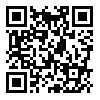Volume 11, Issue 1 (6-2024)
jhbmi 2024, 11(1): 14-25 |
Back to browse issues page
Download citation:
BibTeX | RIS | EndNote | Medlars | ProCite | Reference Manager | RefWorks
Send citation to:



BibTeX | RIS | EndNote | Medlars | ProCite | Reference Manager | RefWorks
Send citation to:
Mohammadi A, Nasiri P, Moghabeli R. Spatio-temporal Analysis of Asthma Prevalence in the Tehran Metropolis Using Geographic Information Systems (GIS). jhbmi 2024; 11 (1) :14-25
URL: http://jhbmi.ir/article-1-833-en.html
URL: http://jhbmi.ir/article-1-833-en.html
Professor of Geography and Urban Planning, Department of Geography, Faculty of Social Science, University of Mohaghegh Ardabili, Ardabil, Iran
Abstract: (2785 Views)
Introduction: Tehran, one of the world's most polluted cities, faces numerous health challenges, including respiratory diseases. Identifying high-risk areas for specific diseases at different periods is crucial for effective health management within the community.
Method: This applied and descriptive-analytical study employed spatial statistics and GIS to conduct a spatio-temporal analysis of asthma in the Tehran metropolis. The statistical population comprised 1,473 individuals suffering from asthma across 355 neighborhoods within Tehran's legal boundaries between 2017 and 2020. To identify and understand the spatial patterns of asthma, techniques such as central mean and standard deviation ellipse, nearest neighbor index, hot spot analysis, global and local Moran's index, and kernel density estimation were utilized to analyze the spatial distribution patterns within the GIS environment.
Results: The findings revealed a uniform nearest neighbor index in the spatial pattern analysis. The kernel density estimation model showed that in 2017, the highest asthma distribution was observed in the southwestern neighborhoods of Tehran. In 2018, the concentration shifted to the center, southeast, and southwest regions. In 2019, the southeastern areas were most affected, while in 2020, the southeastern and southern parts of Tehran exhibited the highest asthma prevalence.
Conclusion: A comprehensive understanding of asthma hotspots, spatial patterns, and geographical distribution of health has been achieved at the neighborhood level in Tehran, which can be considered in preventive measures.
Method: This applied and descriptive-analytical study employed spatial statistics and GIS to conduct a spatio-temporal analysis of asthma in the Tehran metropolis. The statistical population comprised 1,473 individuals suffering from asthma across 355 neighborhoods within Tehran's legal boundaries between 2017 and 2020. To identify and understand the spatial patterns of asthma, techniques such as central mean and standard deviation ellipse, nearest neighbor index, hot spot analysis, global and local Moran's index, and kernel density estimation were utilized to analyze the spatial distribution patterns within the GIS environment.
Results: The findings revealed a uniform nearest neighbor index in the spatial pattern analysis. The kernel density estimation model showed that in 2017, the highest asthma distribution was observed in the southwestern neighborhoods of Tehran. In 2018, the concentration shifted to the center, southeast, and southwest regions. In 2019, the southeastern areas were most affected, while in 2020, the southeastern and southern parts of Tehran exhibited the highest asthma prevalence.
Conclusion: A comprehensive understanding of asthma hotspots, spatial patterns, and geographical distribution of health has been achieved at the neighborhood level in Tehran, which can be considered in preventive measures.
Type of Study: Original Article |
Subject:
Health Information Systems
Received: 2023/12/14 | Accepted: 2024/05/13
Received: 2023/12/14 | Accepted: 2024/05/13
Audio File [M4A 678 KB] (113 Download)
Send email to the article author
| Rights and permissions | |
 |
This work is licensed under a Creative Commons Attribution-NonCommercial 4.0 International License. |






